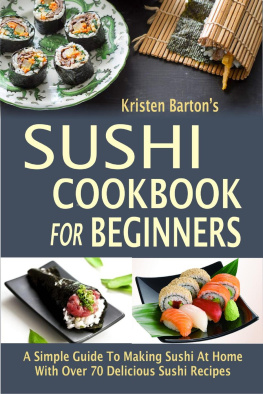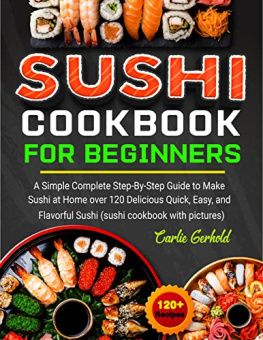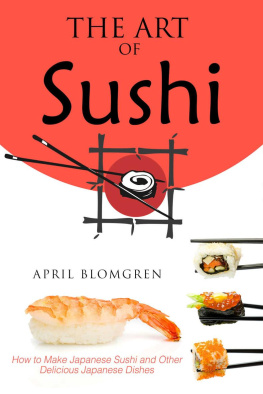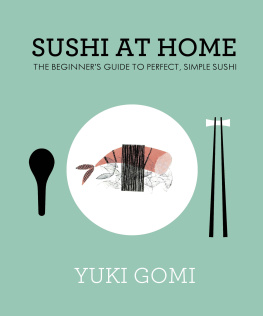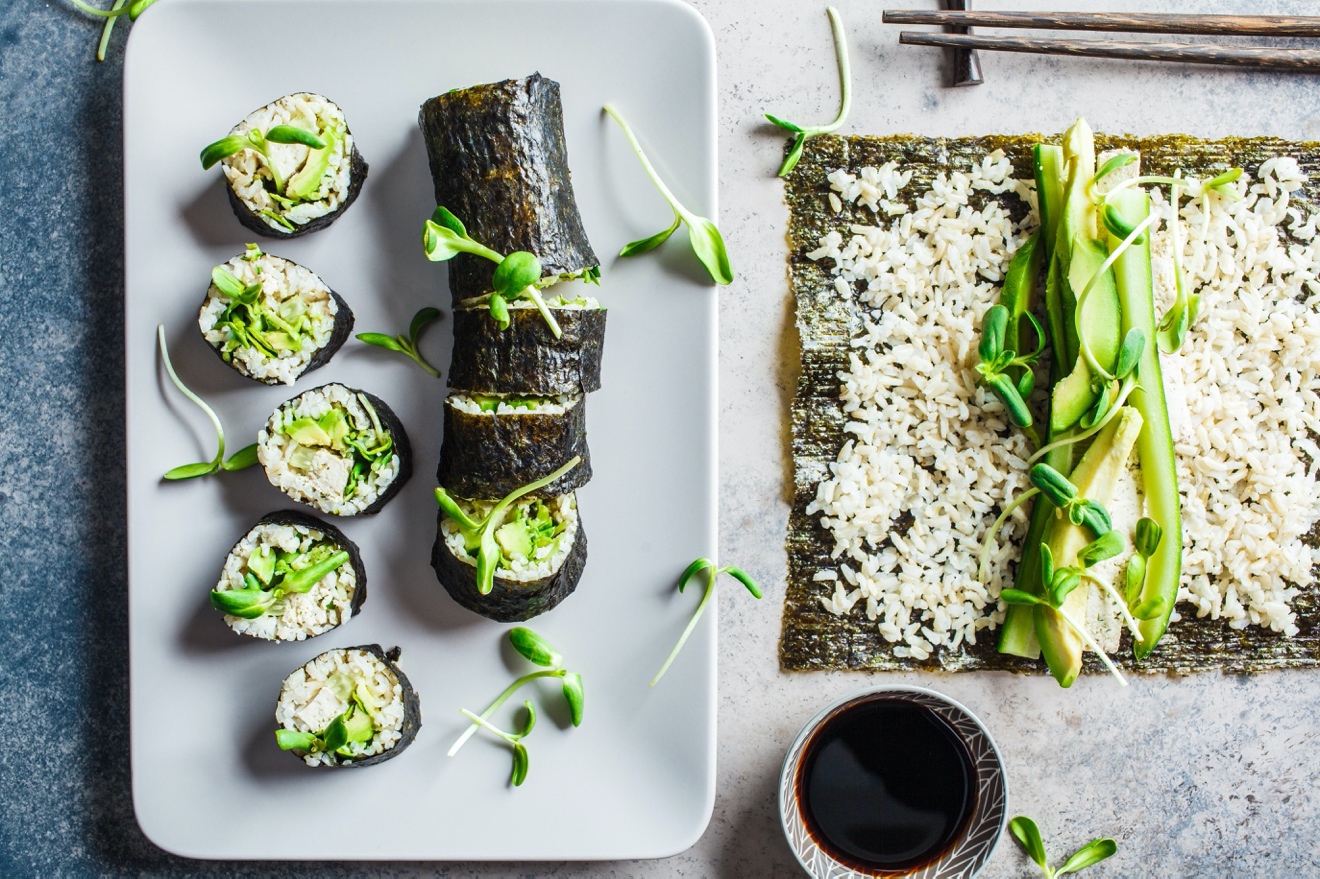Sushi Cookbook
Tasty Sushi Recipes You Can Definitely Make at Home!
BY
Nadia Santa
Copyright 2021 Nadia Santa
License Notes
This book may not be reproduced in part or whole without the express written permission from the author. Whether for commercial or personal use, possession and distribution of this book by any means without permission are prohibited by law.
The content of this material is strictly for entertainment purposes and the reader accepts all responsibility for any damages caused by following the content.
Free and Discounted Books on Me!
When you subscribe, you will receive the e-books that are not only discounted but also free delivered right into your inbox. You will get reminders, so you never miss a great deal, and you can build your e-book library from the comfort of your own living room.
Nothing is better than a good book and a great deal!
Fill out the box above to get started on this amazing offer right away!
https://santa.subscribemenow.com
Table of Contents
Introduction
Sushi is a Japanese dish that consists of cooked vinegar rice shaped into small balls or rolls wrapped in seaweed. The outside layer is usually made up of half dried and half fresh raw fish, with an addition of other ingredients and flavors.
Sushi is made by rolling sushi into a roll using bamboo mats. A sushi chef uses a wet cloth to moisten his hands so that they do not stick onto the sushi roll when it is rolled over it. It is important to remember that after mixing in vinegar with rice in order to preserve it, the rice should never be eaten raw. The chef scrubs the rice to remove any bad smell or taste from it, adds vinegar, sugar, and salt to the rice and mixes it well. The wet cloth should be with a sushi chef when they work with rice so that they can clean their hands after touching the sushi roll.
A sushi chef needs to have a bamboo mat for making rolls of sushi. The bamboo mat is used as a support for making the rolls and offers stability when rolling them. A bamboo mat is placed on top of the roll; this makes it easy for cutting and serving sashimi because they are held together firmly before cutting them into pieces. The bamboo mat is then covered with the sushi rice and the ingredients are added on top of it. The ingredients that are added include salmon, shrimp, scallop, and tuna and so on.
The sushi chef uses a wooden spoon to press down the roll when he forms it. This is done in order to make sure that there is enough rice in between the ingredients for forming a complete roll. The sushi chef then turns over the mat so that the rice faces downwards and removes it from the rolling surface of the sushi. He has to wait for an hour as he covers his bamboo mat with plastic wrap before placing a weight on top of it. This prevents air from getting into your roll while it dries out. The chef then cuts the rolled rice into several pieces over a board and places them in a paper bag.
The rice used for making sushi is a type of short-grain rice that is sticky after being cooked. The rice has to be sufficiently dry so that it can hold together and roll well. It also needs to be cooked with salt and water. Toasted rice is not suitable for making sushi because it results in the loss of its natural scent; thus, roasted rice gives an aromatic taste when eaten. It does not require any cooking time as it forms its own crust while cooking. This makes it easy for the chefs to work with this type of sushi.
Sushi rolls are made of a bamboo mat that has sticky rice on it. The chef must make sure to work with rice by covering his hands with starch and water mixture so that it does not stick onto your hands. He also has to moisten the mixture before making use of a water brush to clean the bamboo mats surface, which ensures that your hands do not stick onto it when you roll the sushi. While making sushi, you can also place wet cloth under your bamboo mat so that you can easily use them to clean and moisten your hands when you are done with rolling sushi. It is important to remember that you should not eat raw rice because it is not safe for consumption.
The chef cuts vegetables using a vegetable cutter or by hand. The chef adds seaweed into the rice and forms it into a bowl-like shape that resembles grass, in which he places pieces of ingredients like shrimp, cooked seafood, lettuce, cucumber, and avocado. The chef adds a piece of soy sauce or Japanese mayonnaise to the fish and beef cutlets. Then the chef places the rice in the container and adds the ingredients that have been placed on top. Next, wrap up the ingredients, which include vegetables, shrimp, cooked seafood, lettuce, cucumber, and avocado into a roll called maki-zushi.
Chapter 1. Sushi
Sushi is a Japanese dish consisting of cooked vinegar rice, seafood (typically uncooked fish), vegetables, and occasionally tropical fruits. Sushi is served with soy sauce, wasabi, and ginger slices. It is often prepared with raw fish, seafood, or eggs.
History of Sushi
For many centuries, sushi has been a part of Japanese culture. It's believed to date back as far as the 8th century, but it wasn't until the 20th century that sushi really became popular outside of Japan.
Today, sushi is eaten throughout the world and often appears in popular American restaurants like Subway. The sushi you eat at Subway in Japan or in Europe is the same as the sushi you eat here, with some minor adjustments.
The Origin of Sushi
There are many myths surrounding the origin of sushi, including one that states that sushi was originally eaten as a way to bring luck during baseball games. Another story claims that sushi was first created when Japanese fishermen who were catching fish for their families threw their catch into seawater and placed it on a rock to dry. Once the fish was completely dried out, they placed it on rice for later consumption. Depending on whom you ask, these stories may or may not be true.
Its origin can be traced to at least the 8th century. It's believed that sushi began being prepared by Japanese priests after they were given rice from a heaven goddess known as "Sushi Daijingu" (The Sushi Deity). These first priests then taught the art of sushi to others.
Sushi Types
There are two main types of sushi, called nigiri and maki. Nigiri is a slice of raw fish or meat with rice on top; maki is rolled sushi made from seaweed. There are two types of maki: hoso (a thin sheet) and Futomaki (thick rolls). And there are also five different kinds of nigiri: saba, Hamachi, sake, tako, and ika.
Sushi Types:
Maki also come in three varieties: horumaki (thin roll), temarizushi (pressed sushi), and inarizushi (sushi stuffed into fried tofu).
Hosomaki is a thin roll. Temarizushi is pressed sushi. Inarizushi is sushi stuffed into fried tofu.



